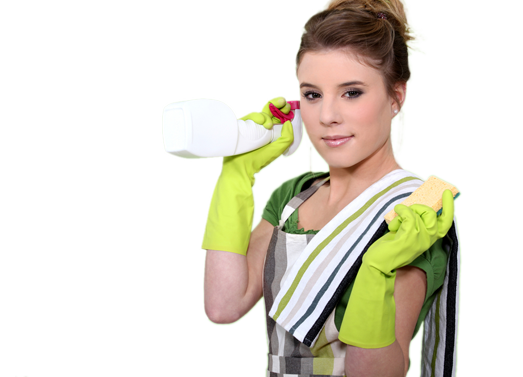Bring New Life to Your Curtains with These Cleaning Tips
Posted on 08/09/2025
Bring New Life to Your Curtains with These Cleaning Tips
Are your curtains looking dull, dusty, or dingy? Curtains play a vital role in every home, from enhancing interior aesthetics to providing privacy and insulation. However, many people overlook their cleaning needs. Reviving your curtains doesn't require a complete replacement--a good cleaning can restore their beauty and extend their lifespan. In this comprehensive guide, you'll discover great curtain cleaning tips and maintenance tricks to bring new life to your curtains.
Why Clean Curtains Matter
Before delving into curtain maintenance tips, it's essential to understand why clean window treatments are important. Curtains collect dust, pollen, pet hair, and even mold spores over time. Regular cleaning:
- Improves indoor air quality by reducing allergens.
- Preserves fabric color and texture.
- Prevents fabric damage caused by accumulated dirt.
- Enhances the overall look of your living spaces.

How Often Should You Clean Curtains?
Curtains can act as both a decorative and functional element, but they also become dirt magnets. How often you clean them depends on several factors:
- The presence of smokers, pets, or children in your home.
- Your home's location (urban areas accumulate dust more quickly).
- Allergy concerns or respiratory issues among household members.
As a general rule, light dusting or vacuuming should be done every month, with a deep clean scheduled once or twice a year. In homes with allergies or heavy air pollution, consider more frequent cleaning.
Types of Curtains and Appropriate Cleaning Methods
Not all curtains are made equal. Choosing the best cleaning approach depends on the fabric and care instructions. Here's how to clean different types of curtains and drapes:
1. Cotton and Linen Curtains
These natural materials are relatively durable but prone to shrinkage if washed incorrectly. To refresh your cotton or linen curtains:
- Check care labels for manufacturer recommendations.
- Machine wash on a cold, gentle cycle with mild detergent.
- Dry naturally--avoid direct sunlight to prevent fading.
- Iron while slightly damp to minimize wrinkles.
2. Synthetic Curtains (Polyester, Nylon, Acrylic)
These options are easy to care for and less likely to wrinkle. For these:
- Use a gentle machine wash on a cold cycle.
- Hang to air dry or tumble dry on low if the care label allows.
- Avoid high heat to prevent damage.
3. Delicate Fabrics (Silk, Velvet, Lace)
Silk, velvet, and lace curtains are gorgeous but require special care. To revitalize delicate curtains:
- Use a gentle hand wash or professional dry cleaning.
- Never wring out these fabrics--gently blot excess water.
- Dry flat or hang away from direct light.
- Velvet curtains may be steam cleaned but check with a professional first.
4. Blackout and Thermal Curtains
These often have linings that need protection. Here's how to freshen up thermal or blackout curtains:
- Spot clean with a damp cloth and mild detergent.
- Vacuum regularly to remove dust and pet hair.
- Avoid submerging; water can damage the lining.
Easy Curtain Cleaning at Home
Bring out the best in your window dressings with these simple curtain cleaning tips that anyone can follow:
1. Regular Dusting and Vacuuming
One of the easiest ways to keep curtains looking new is to prevent dust buildup. Use the upholstery attachment on your vacuum cleaner and:
- Work gently from top to bottom.
- Pay attention to hems, pleats, and folds.
- Vacuum both sides for thorough cleaning.
Pro tip: For lace or sheer curtains, use a low-suction setting--or place a nylon stocking over the nozzle--to avoid snagging delicate fabrics.
2. Spot Cleaning Stains
Don't let spills or fingerprints ruin your beautiful curtains. Address stains as soon as they appear:
- Blot (don't rub) liquid stains with a clean, absorbent cloth.
- Pre-treat with a mild detergent diluted in water.
- Gently rinse with a damp cloth and let air dry.
Avoid harsh chemicals that could discolor or damage the fabric.
3. Steam Cleaning for Curtains
Steam cleaning is excellent for removing wrinkles, killing germs, and eliminating odors--especially for heavy or lined curtains that can't be easily laundered:
- Use a handheld steamer, keeping a safe distance to avoid water marks.
- Work systematically, from top to bottom.
- Open windows for ventilation and faster drying.
4. Washing Machine Care for Curtains
If your curtains are machine washable, take these precautions to restore curtain freshness without risk:
- Remove hooks, rings, and trims first.
- Wash in small loads to prevent overcrowding and excessive wrinkling.
- Use a gentle detergent (avoid bleach, unless fabric specifies).
- For sheer or delicate fabrics, put curtains inside a mesh laundry bag.
5. Hand Washing Curtains
Hand washing gives you more control, especially for delicate or vintage curtains:
- Fill a bathtub or large basin with cool water and a mild detergent.
- Soak and gently agitate fabric to remove dirt.
- Rinse thoroughly with clean water.
- Press out excess water--do not wring!
- Hang to air dry or lay flat, according to care label.
Quick Tips for Curtain Maintenance
Beyond regular cleaning, smart habits help maintain curtain beauty between washes. Here are valuable curtain care tips:
- Rotate curtains every few months to balance sun exposure and prevent uneven fading.
- Use curtain tiebacks to minimize handling and reduce wear.
- Clean windows and window sills regularly to prevent dirt transfer to curtains.
- If possible, use liners with decorative curtains to shield from dust and sunlight.
- Spray a light mist of fabric freshener to keep curtains smelling clean in between washes.
Dealing with Specific Curtain Problems
1. Odors
Curtains can harbor odors from cooking, smoke, or mildew. To refresh curtains without a full wash, generously spritz them with a fabric deodorizer or hang them outside on a breezy day. For lingering smells, try sprinkling baking soda on the fabric, letting it sit for 30 minutes, then vacuuming it off.
2. Mold and Mildew
If you see mold spots or detect a musty smell, wash curtains promptly. For spot-treating:
- Mix one part white vinegar with four parts water.
- Apply with a spray bottle or sponge and let sit for 10 minutes.
- Rinse thoroughly and air dry in sunlight.
Important: If mold is widespread, it's safer to replace the fabric or consult a professional cleaner.
3. Allergy-proofing Curtains
For households with allergy sufferers, consider switching to machine-washable curtains. Wash every 4-6 weeks, and vacuum weekly to minimize allergen build-up. Avoid heavy curtains that trap dust--instead, opt for lightweight materials and open windows for air flow when possible.
Professional Curtain Cleaning Services: When to Seek Help
Some curtain fabrics and persistent stains require specialized care. Here's when to call in the pros:
- Heavily soiled or stained curtains that resist home cleaning.
- Delicate, expensive, or vintage fabrics (like silk, brocade, or embroidered drapes).
- Oversized or floor-to-ceiling curtains that can't fit into a standard washer.
- Pinch-pleat drapes or complex constructions with linings and embellishments.
Professional curtain cleaners use specialized solvents and techniques that lift dirt without damaging your textiles. Many offer on-site or pickup services for your convenience.
Restoring Curtain Beauty: Aftercare and Practical Tips
1. Ironing and Steaming
For a crisp, new-looking curtain after washing, iron or steam when slightly damp to remove wrinkles. Always follow fabric care instructions and use an ironing cloth for delicate types.
2. Rehanging Curtains
While rehanging, ensure hooks, rings, and rods are clean. Wipe down hardware to prevent rust stains, and adjust length if any shrinkage has occurred.
3. Embracing Sustainable Curtain Care
Regular cleaning extends your curtains' life and reduces waste. Proper maintenance also means less frequent laundering, saving water and energy. For stains, opt for eco-friendly detergents and stain removers whenever possible.
4. Storing Curtains Properly
If rotating out curtains seasonally or storing between uses:
- Clean and thoroughly dry before packing.
- Store in a cool, dry location in breathable cloth bags, not plastic.
- Add a sachet or cedar ball to deter pests.

Frequently Asked Questions about Curtain Cleaning
- Can you put curtains in the tumble dryer?
Only if the care label permits. Most natural fibers should be air-dried. Tumble drying on low may be safe for some synthetics, but remove promptly to reduce wrinkles. - How do you clean curtains without removing them?
Regular vacuuming and steam cleaning are effective ways to freshen up curtains while they remain hung. - How do you keep curtains fresh in homes with pets?
Use the vacuum's pet hair attachment weekly, wipe muddy paws before pets approach the curtains, and spray with a fabric deodorizer. - Can you use bleach on white curtains?
Use bleach only if the care label allows and test on a small, hidden area first. Oxygen-based bleaches are safer than chlorine.
Conclusion: Fresh, Revitalized Curtains Make All the Difference
Giving your curtains new life doesn't require a hefty budget or professional skills. With these cleaning tips for curtains--whether dusting, hand washing, or tackling stubborn stains--you can maintain window treatments that look, smell, and feel fresh. Make curtain cleaning a regular part of your home care routine, and enjoy beautiful, healthy living spaces every day!
Remember: Well-maintained curtains not only enhance your home's decor but also support a healthier indoor environment. Don't wait for visible dirt or dinginess--use these curtain-refreshing techniques to keep your window dressings stunning all year round!



